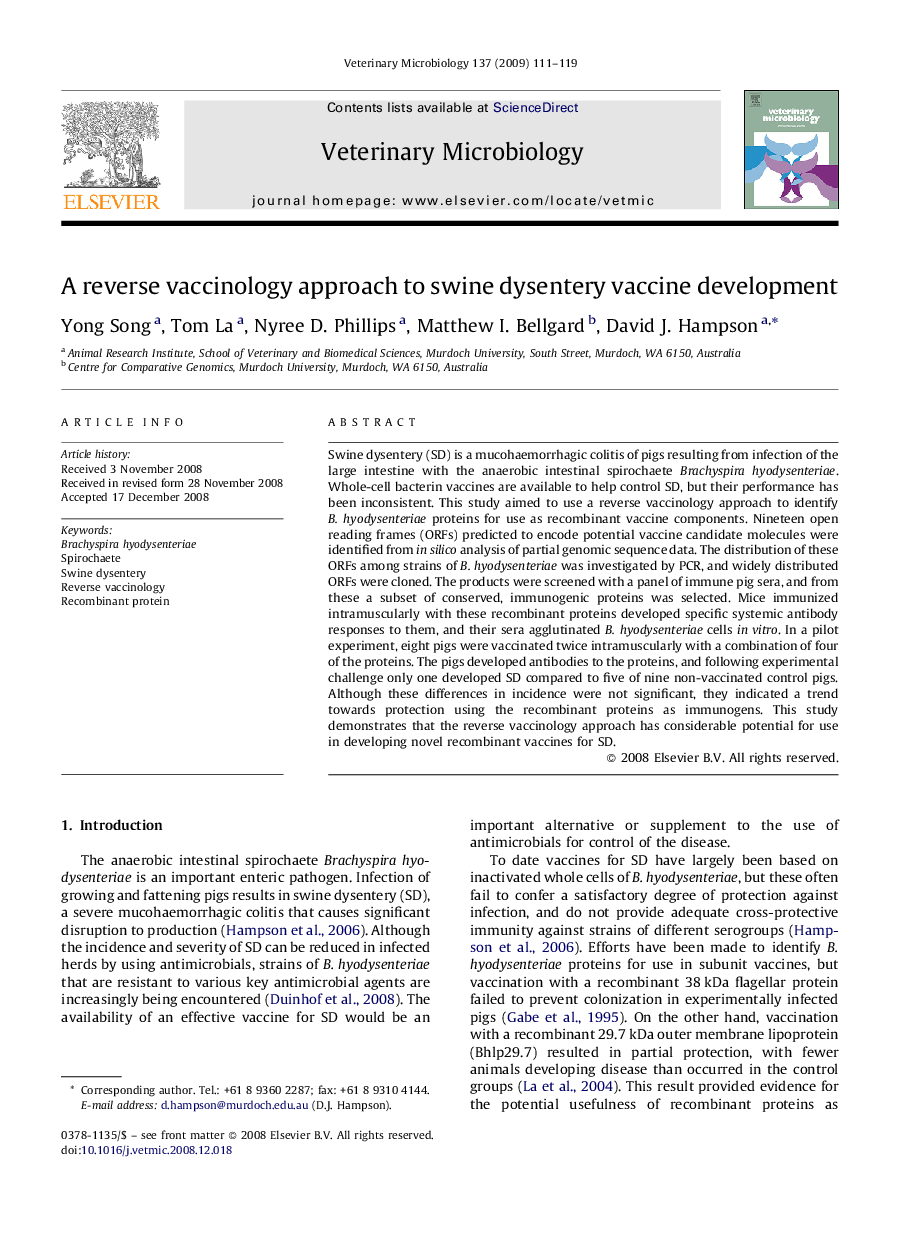| کد مقاله | کد نشریه | سال انتشار | مقاله انگلیسی | نسخه تمام متن |
|---|---|---|---|---|
| 2468499 | 1555425 | 2009 | 9 صفحه PDF | دانلود رایگان |

Swine dysentery (SD) is a mucohaemorrhagic colitis of pigs resulting from infection of the large intestine with the anaerobic intestinal spirochaete Brachyspira hyodysenteriae. Whole-cell bacterin vaccines are available to help control SD, but their performance has been inconsistent. This study aimed to use a reverse vaccinology approach to identify B. hyodysenteriae proteins for use as recombinant vaccine components. Nineteen open reading frames (ORFs) predicted to encode potential vaccine candidate molecules were identified from in silico analysis of partial genomic sequence data. The distribution of these ORFs among strains of B. hyodysenteriae was investigated by PCR, and widely distributed ORFs were cloned. The products were screened with a panel of immune pig sera, and from these a subset of conserved, immunogenic proteins was selected. Mice immunized intramuscularly with these recombinant proteins developed specific systemic antibody responses to them, and their sera agglutinated B. hyodysenteriae cells in vitro. In a pilot experiment, eight pigs were vaccinated twice intramuscularly with a combination of four of the proteins. The pigs developed antibodies to the proteins, and following experimental challenge only one developed SD compared to five of nine non-vaccinated control pigs. Although these differences in incidence were not significant, they indicated a trend towards protection using the recombinant proteins as immunogens. This study demonstrates that the reverse vaccinology approach has considerable potential for use in developing novel recombinant vaccines for SD.
Journal: Veterinary Microbiology - Volume 137, Issues 1–2, 28 May 2009, Pages 111–119